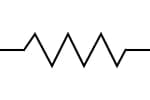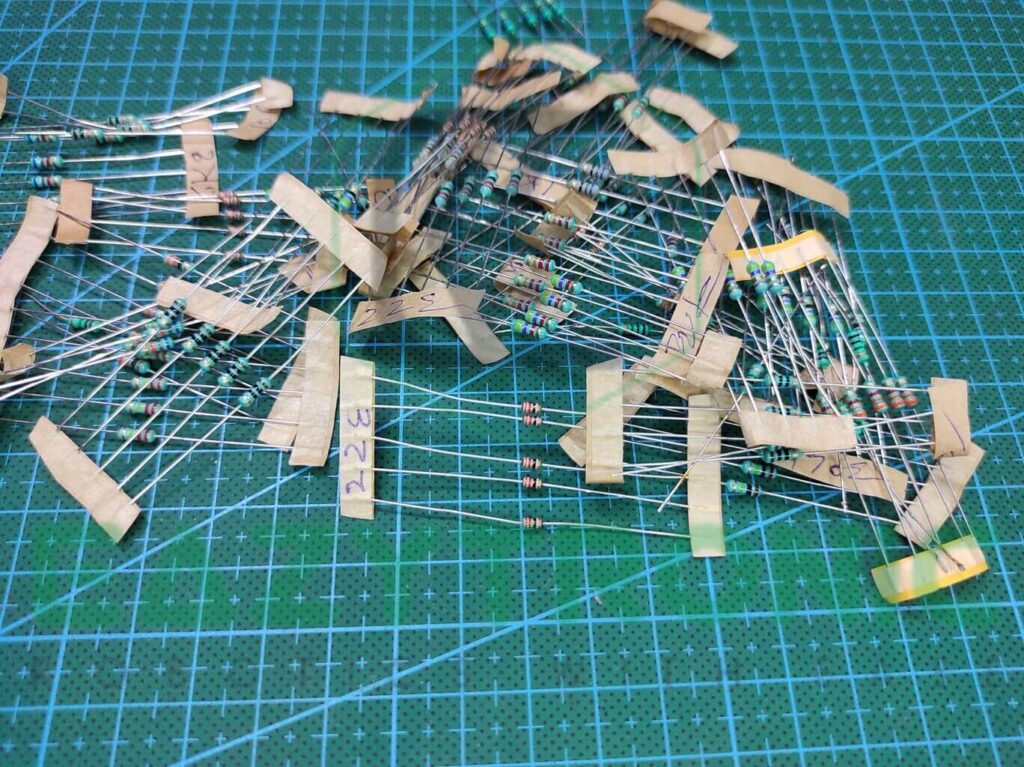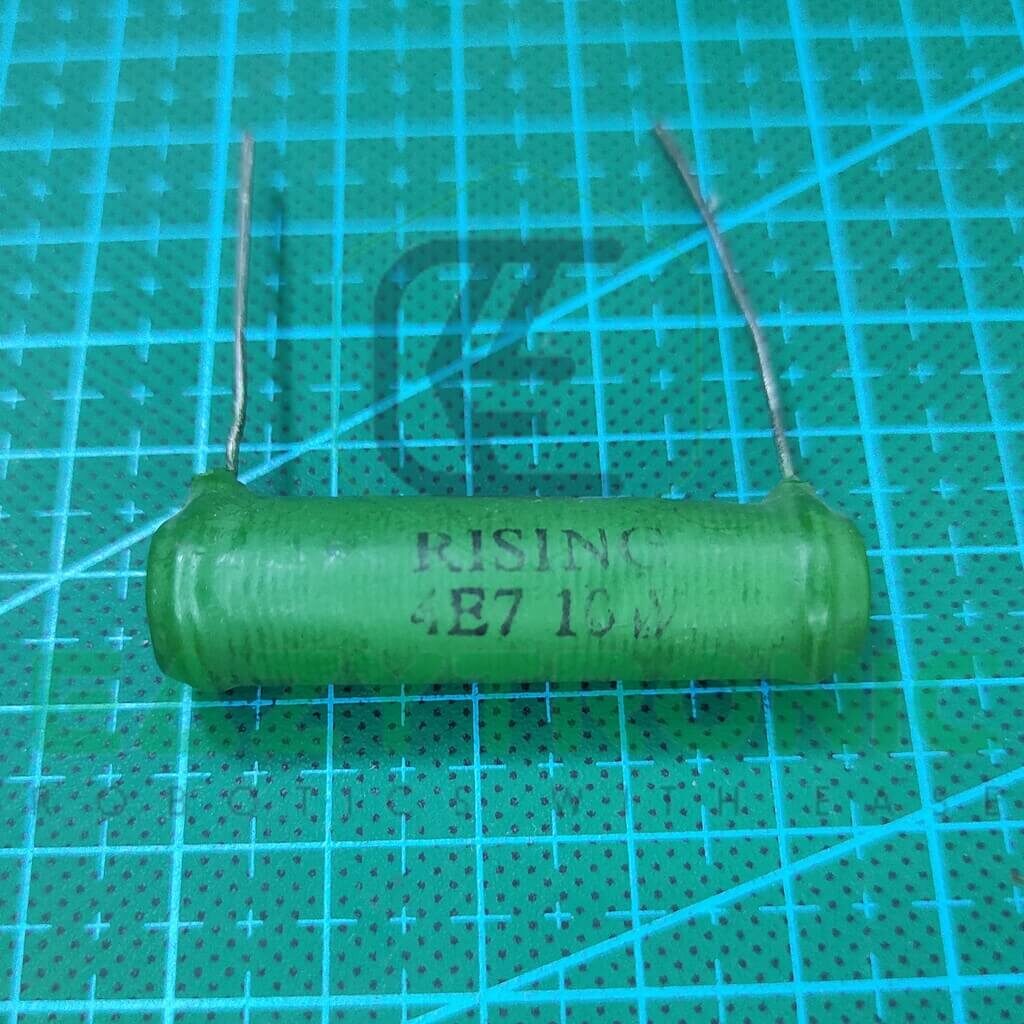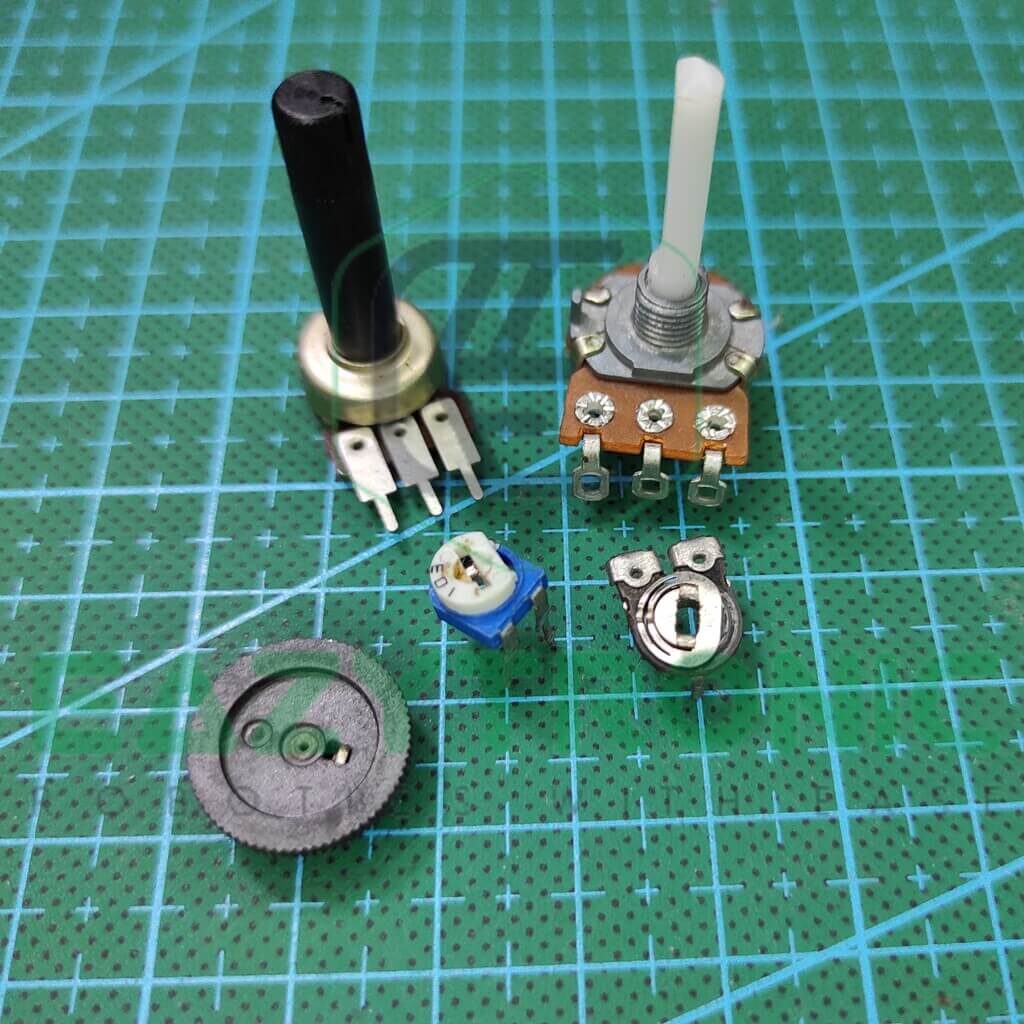Resistor, this term is very common from our school days till now. We all came through this term occasionally, especially in the science field, mainly electronics. This is the component that is available in different types, values, and sizes. Thus, it holds the status of an important component in every circuit. Moreover, in my experience, there are cases in which due o some small resistor the whole system doesn’t work. Therefore, you can’t consider it as something unworthy of notice. So without wasting any time, let’s start discussing resistors.
What is a RESISTOR ?
RESISTOR, this term comes from the word resists, it means to oppose something. Therefore, a Resistor is a component that limits the current in a circuit. Usually, it is two terminal devices that do this job, but it can change the application we are looking forward to. Resistors are of different types and different materials, that may be useful in different conditions. Though they don’t do any active work like transistors and IC, these are called passive components. Moreover, these are also used for testing power supplies, as this requires checking them up to their max potential.
What a Resistor do?
Well, it is quite difficult to talk about this, as the working of a resistor depends upon its type and the function it performs. But most commonly, it resists the flow of current. In a circuit, both current and voltage can be proven lethal to your components. Apart from this, there are also many ways like in lower classes most of us have might have used LEDs which are very attractive at that time. But it is always advised to use a resistor in series along with the battery. Because resistor help in lowering the voltage of the whole circuit, hence protecting the circuit.
In addition to this, there are many other ways in which resistors can be used, further into electronics there are circuits called filters. Filters are very useful and are made in combination with resistors and other components. Moreover, the very common upcoming topic is Voltage Divider. Voltage dividers are one of the most demanding circuits along with the current sensing resistor as these are most common in any circuit for measuring the current and voltage. Further, in the discussion, we’ll discuss different types of resistors, and from there you’ll get a better idea.
Identification
Now comes the main topic of measuring and identifying a resistor. This task is very important as all the R&D work in the electronics field is based on this. Also, as a beginner, it is advised to do so. Therefore, below in sub-topics, I’ll cover most of the information regarding the identification and measuring of a resistor.
Resistor Symbol


Identifying a resistor in a schematic is the main problem, not only this but also identifying the type we have used is also very important. As there are many types of resistors and each of them has its function, so identifying them in a large circuit can be quite challenging. Below are some of the most used resistor symbols. There are two types of symbols mostly used, namely American and European. The symbols are different, but both can be easily identified in a schematic. Apart from the mentioned below, other symbols look similar to European resistor and inductor symbols in the certain schematic.
Measuring Resistor
Measuring a Resistor is quite interesting as there are many instruments available in the market for this purpose and that too at a cheap price. However, while learning, you have to make sure to know every way to do so. Therefore, in the following subheadings, I’ll cover enough ways to measure a resistor.
Using Formula
Well, here comes the conventional way of measuring a resistor. Most of you might find this nostalgic, as we all learn this in junior classes, yet it is important throughout life in this field. Let’s start from the beginning, measuring a resistor is easy but before this, you must know on which principle it depends. It depends on OHMS LAW, this law was given by a German Scientist that explains how to measure a resistor and on what factors does the resistance of a material or resistor depends.
OHMS LAW
OHMS LAW states that in a closed circuit, the resistance of a material or complete circuit depends on the product of the voltage and current flowing through the circuit. This is accurate in every condition in a closed circuit. The previous statement is simplified for easier understanding, but the actual statement about OHMS LAW is as follows. Precisely, Ohm’s Law says, in a closed circuit voltage through the circuit is directly proportional to the current flowing through it. Taking all physical conditions and temperature remain constant.
V ∝ I
As this seems a bit uncomfortable, therefore a constant is introduced named Resistor. This term, completely explains the correct formula.
V=IR
In contrast, if we have to find the resistance of a conductor, most probably a wire. Then the resistance of that wire depends on several factors.
R=ρL/A
Here R corresponds to the Resistance of the material. Furthermore, ρ is the resistivity of that material. Precisely, there is a certain resistivity if each material can conduct electricity and is ductile and malleable. The remaining two, L & A are the Length and Area of the cross-section of the wire.
Connecting Multiple Resistors
If you are connecting two or more resistors, then the following formula must be kept in mind.
For Series
RNet = R1 + R2 + R3 + ………………………….. + Rn
For parallel
1/RNet = 1/R1 + 1/R2 + 1/R3 + ……………………………….. + 1/Rn
Using Resistor Color Code
The alternate way to measure a resistor is to use the marking on its surface to calculate its value. For this, one must be able to clearly see the number of rings and the color of rings on the surface of the resistor. Not only this but if the marking on its surface is dirty then you may miscalculate them as the wrong value. Therefore, make sure to clear any dirty surfaces before observing them. After you can see the rings of marking on them clearly. You can do two things, first one is to use any online platform for calculating them or take reference from the color code table.
Although this color code technique is old, it is still used in Axial or THT resistors. However, in the Power Resistor, this marking might be missing. Therefore, you have to use a measuring device for this purpose, no simple other way is possible. For measuring the resistance through an online platform, you can use any of the available online color code calculators. For this, simply search for ”Resistor Color Code Calculator”. Although, there are several platforms for measuring resistance, yet there are certain ones that do not give regard to the number of bands on the surface.
Using Color Code Table
| COLOR | 1st BAND | 2nd BAND | 3rd BAND (only for resistors having 5 or 6 bands) | MULTIPLIER | TOLERANCE (5 band or more) | TEMPREATURE COEFFICIENT (6 band resistor) |
|---|---|---|---|---|---|---|
| BLACK | 0 | 0 | 0 | x1Ω | N/A | N/A |
| BROWN | 1 | 1 | 1 | x10Ω | ±1% | 100 ppm/°C |
| RED | 2 | 2 | 2 | x100Ω | ±2% | 50 ppm/°C |
| ORANGE | 3 | 3 | 3 | x1kΩ | ±3% | 15 ppm/°C |
| YELLOW | 4 | 4 | 4 | x10kΩ | ±4% | 25 ppm/°C |
| GREEN | 5 | 5 | 5 | x100kΩ | ±0.5% | N/A |
| BLUE | 6 | 6 | 6 | x1MΩ | ±0.25% | 10 ppm/°C |
| VIOLET | 7 | 7 | 7 | x10MΩ | ±0.10% | 5 ppm/°C |
| GREY | 8 | 8 | 8 | x100MΩ | ±0.05% | N/A |
| WHITE | 9 | 9 | 9 | x1GΩ | N/A | N/A |
| SILVER | ÷10Ω | ±5% | ||||
| GOLD | ÷100Ω | ±10% |
Usage guide
If you are using the color code table for reference, then you have to learn this table or paste it somewhere you can have access to it from your table. First, make sure to read and hold the resistor in the correct order such that you can differentiate a gap between two band groups. You have to hold it such that the larger group must be on the left side and the shorter one on the right side. This marks the reading order of the surface bands. Now match the colors carefully.
If you read the codes carefully from the table above, then make sure to first count the total number of bands before reading the table. Generally, resistors have only 4 bands, but some high-resistance value ones have 5–6 bands. Hence, you have to see the 3rd significant column only if your ones have 5–6 bands. If not, then read only two and then proceed to the next step.
First, read the first two bands and correspond them to the respective color code from the table. Then for only 5–6 bands see the 3rd band, else regard the third band as the multiplier. The next band is for the multiplier, this is to be multiplied with the last measured significant figures. Lastly, there are two other bands corresponding to the tolerance and temperature coefficient, respectively. On the other hand, only 6 band resistors have temperature coefficient bands. Whereas 3,4&5 band ones only have significant figures, multiplier, and tolerance band.
Using Resistor Code
If you are using an SMD package, then you have a numeric marking on the top surface of the resistor. This code can be 3–4 digits, depending upon its resistance value of it. This code represents the resistance value and is calculated similarly to the color code. However, SMD resistors come in many sizes, 0602 being the most common. You can easily calculate their resistance value using some online tools. But through that also you have to make sure that pattern or way in which the digits are written. Because there are 3 ways, mainly 3 digits, 4 digits, and alphanumeric. These types of resistor are not recommended for beginners, as there requires good soldering skill or hot air reflow.
Types of Resistors
The resistors can be broadly categorized into Fixed Resistors and Variable Resistors. There also exists Resistors whose values are dependent upon some physical conditions. These are mainly used in requiring the environmental values as input for further calculations. So, without wasting time, let’s learn about both types.
Fixed Resistor

Carbon composition Resistor
These are the most common type of Fixed Resistors. This is because they are small and cheap, and are available in very different sizes and power ratings. Thus, color codes are used on them for the identification of their resistance values. As these are available in vast variety, therefore these types can be found with very High Power ratings. On the other hand, the composition of these resistors is rather simple due to which these are prone to temperature changes and less heat dissipation problems.
If we talk about the composition of these resistors, it is remarkably simple. The inner material or the core substance is made up of carbon clay, which is a good conductor of electricity. The leads are made up of tinned copper to make the conduction of electricity easier than the core. Over it, there is a protective layer of insulating material, which is generally made up of ceramic or plastic. The markings on the resistor are then marked accordingly. The markings or color codes are in two conventions, General Color Coding & Precise Color Coding, this refers to 4 to 5 markings of color code respectively.
Carbon film Resistor
This is another type of carbon-conducting material-based resistor, but it is meant for the sole purpose of High Voltage conditions. These resistors are less noisy as compared to CCR ones. Moreover, these require a special manufacturing process, which makes them ideal for High Voltage and Temperature conditions. If we talk about manufacturing, these are built upon a ceramic core upon which a layer of correct thickness is deposited in a controlled environment. After this, a Helical cut is made to make a path for the conduction of electrons.
After this, it is covered with an insulating layer for outer covering and color code markings are made on it. Generally, the coating is made of silicon to make the resistor to be bearable in high-temperature conditions. This is how these types of resistors can work in the voltage of range 15kV and temperature of about 350 °C.
Metal Film Resistor
These types of Resistors are the same as the Carbon film resistor. But instead of using carbon material for the conduction of electrons, a thin metal film is used. However, these seem to be similar, but they are different in many factors or precisely better than Carbon film resistors. If we talk about manufacturing steps, these are as stated. First, a pure cylindrical ceramic core is used upon which a metal film of adequate thickness is cut and vacuum sealed. This metal film is cut into a helical path, just as in a Carbon film resistor.
What makes it different is its tolerance limit, which results in high stability. Moreover, these also have low noise as these are used in a circuit that requires low noise and high stability. Therefore, these are mostly used in circuits requiring precise working at low temperatures. Also, those can withstand for greater time with fewer chances of failing.
Metal Oxide Film Resistor
These are one of the power resistor types that have outstanding capabilities as compared to Carbon film and Meta Film resistors. These are not similar to Metal Film Resistors, as the composition or the material used is far more different from the one used in those. Though, these are not as cost-effective as Carbon Film resistors. This is because for making a High endurance and Large power dissipation Resistor, Metal oxide requires is costly as compared to Carbon Film. If we talk about their composition, then it is somewhat similar to Carbon Film and Metal Film Resistors.
A ceramic Rod is used as the core material over which a layer of metal oxide which is generally Tin Oxide is deposited. Unlike other resistors, a helical path is not cut onto the resistor. The ceramic core is introduced into metal halide vapors, in this case, it is tin chloride. This form a coating over the ceramic core, which is then reacted with air to achieve the corresponding metal oxide. Then the spiral cut is made just like in other cases.
Wire wound Resistor

This is another type of fixed resistor, but it includes several other variable resistors also. The types of variable wire wound resistors will be discussed in the variable resistor section. But here we’ll see what are the types of fixed wire wound resistor and their composition. There are a few types of Power resistors, and precision resistors are two of them. If we talk about the manufacturing of these resistors, then it can be quite understandable from its name. A ceramic core is used in this case also, around which a wire is a wound which is the main resistor. The leads are made solely of copper to conduct electricity and to protect the wire wound around, it is covered with a ceramic coating.
The wire used in the making of Wire wound resistors is of many types, this depends upon the value and application we want to use them for. Moreover, some alloys are also used in making them, but there is another factor that affects their construction. The type of binding also plays a role in their value and power dissipation capabilities.
Variable Resistor

This is another category of types of resistors and consists of members of similar construction. Therefore, we’ll discuss their construction once but for the difference between them, I’ll mention below. Variable resistors are those whose resistance values can be adjusted according to the user’s needs. Fixed Resistors only have two pins, but variable resistors have generally three or more pins. Moreover, several models can be controlled digitally aka digital potentiometers. This is important because in some applications it requires variable resistance at some point in time.
Potentiometers
This is the first type of variable resistor, also mostly available and used. This type includes different subtypes or variants of potentiometers. A potentiometer is generally a mechanical part that increases or decreases the resistance across its ends. For this, one needs to rotate the knob present on the potentiometers. In addition to this, a potentiometer can either be a single-turn, multi-turn, dual-gang, or concentric shaft. There is certainly some difference between all of this. But before that, all of this has 3 pins, two for input and one for output.
Single Turn Potentiometers are the very first and simplest example of Potentiometers. In this type, there are three pins, out of which the two on the opposite ends are for input. The one in between those two is connected to a metal strip that sweeps over a conductive path. The conductive path is made up of some resistive material, therefore offers resistance. If we talk about it, the most precise and appropriate application of such type is to trim the voltage and current values in some projects. Dual-gang type is also similar, but they have the same structure stacked beneath one another, offering trimming two channels with just one knob.
Concentric type potentiometers are similar to dual-gang type but instead of a single knob, they have two knobs concentric to each other. In other words, you can separately control both potentiometers. The last is the Multi-turn type, which is as simple as the single-turn resistor, but there is a difference. Multi-turn utilizes multiple turns to complete range the resistance between the given range, whereas single turn does that in less than one round.
Linear Potentiometer
This is another type of potentiometer that is used in special cases like the sliding function. Hence, these potentiometers are called sliding potentiometers or Linear potentiometers. There are also several types within it. The First Single Rail Linear potentiometer works similarly to that of a single-turn potentiometer but in a linear way. Secondly, the Dual Rail potentiometer is similar to the single rail one, but there is a slight change, you can control both with a single slider or with an individual depending on your model. Next is Multi-turn, which is similar to the multi-turn potentiometer, or we can say the same. However, the only difference we can see is in the dimensions of its packing.
The last is the Motorized Fader, which is specially used in control systems like DJs, Video editing, or in the media and entertainment industry. Because the instruments that use them can either be controlled with software or physically. Therefore, this type is mostly used in these instruments.
Digital Potentiometers
Now-a-days there are many IC which are in fact digital potentiometers and can be controlled via various communications like SPI and I2C. This is mostly useful in devices which require no bulky structure and compact packing. I haven’t used them in any projects so far, but I do have them.
Rheostat
This is another type of variable resistor similar to a potentiometer, you can say it is an open multi-turn potentiometer. There is no change in the multi-turn potentiometer and rheostat, but only in the scale of their dimensions. This device is used in schools, colleges, and other research institutes to perform experiments and most commonly in old radios. It has a copper wire wound around an insulator cylinder. Over these slides, a metal clip touches the copper wire and, as a result, changes the resistance.
Other Types of Resistor
Several other types of resistor record the values or works as input. As these are used for input data, hence these are not used in every circuit but whenever their special need requires. Below are some of the most commonly known.
Thermistor
These are one of the most used types of resistors, most commonly in Multimeters, Batteries, and other circuits. Their resistances change according to the temperature in their nearby area. The resistance of these is directly proportional to the increase in temperature. There are many types and ranges of Thermistors available in the market. In addition to this, these are most commonly known as NTC & PTC.
Varistor
This is also another type of resistor, its resistance changes according to the changes in voltage. These are usually found in power supplies and other power-related equipment. Their working is somewhat similar to the Zener diode, but there is a slight difference. They mainly come in packages suitable for THT components.
This is enough for the basic resistor guide, for more information comment below I’ll try to add up some more. Until they read our other article and if you face any issues comment below I’ll resolve them asap.

